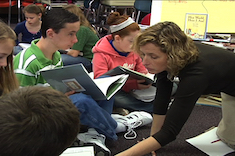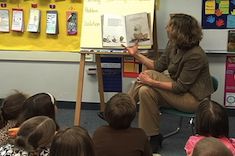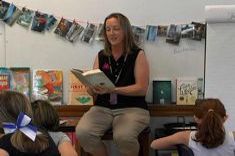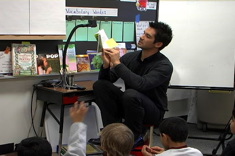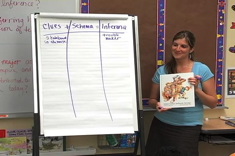There are moments during read aloud that feel almost magical: when students lean in as the plot twists and turns, or when they snicker as they understand the author’s play on words. Or when they turn and talk, and we hear them develop their interpretations or ask thoughtful questions. It is during these moments that read aloud becomes the heart of our teaching—the text, the students, and their thinking all come together to create a bit of magic right there in the classroom.
Then there are other times when this magical feeling disintegrates. For me, this happens as soon as I ask, “What are you thinking? Stop and jot in your notebook.” In those moments, a few students begin writing, others stare at their notebooks in silence, and some murmur, “Please keep reading.”
As teachers, balancing reading aloud and writing about reading can be tricky. We know the value of reading aloud, but we also know how important it is for students in grades 3-6 to learn to capture their thinking. Students need to notice essential details in a text, find patterns, and develop their interpretations. We also want them to know that their ideas are worthy—their thinking matters! So, how do we balance it all? How do we keep read aloud joyful and still teach students the power of notetaking?
The whole-class notebook has helped me find this balance. The whole-class notebook isn’t fancy; it is simply an enlarged notebook that students take turns writing in during read aloud. Large sketchbooks make great whole-class notebooks. The pages are sturdy and large enough for the entire class to see. If you don’t have a sketchbook, you can fold chart paper in half to form a book or create a digital notebook in Padlet or Google and display it on the Smartboard.
The Read Aloud Notebook in Action
Each day, one partnership is in charge of the notebook. As we read aloud, the notebook stays closed, but once students turn and talk, the two students with the notebook discuss their ideas, listen to the students around them, and then jot down one or two talk-worthy ideas or critical pieces of evidence. Here are one partnership’s jots about the book Oliver, by Birgitta Sif. Notice how the students recorded evidence from the text as bullets and circled their interpretations.
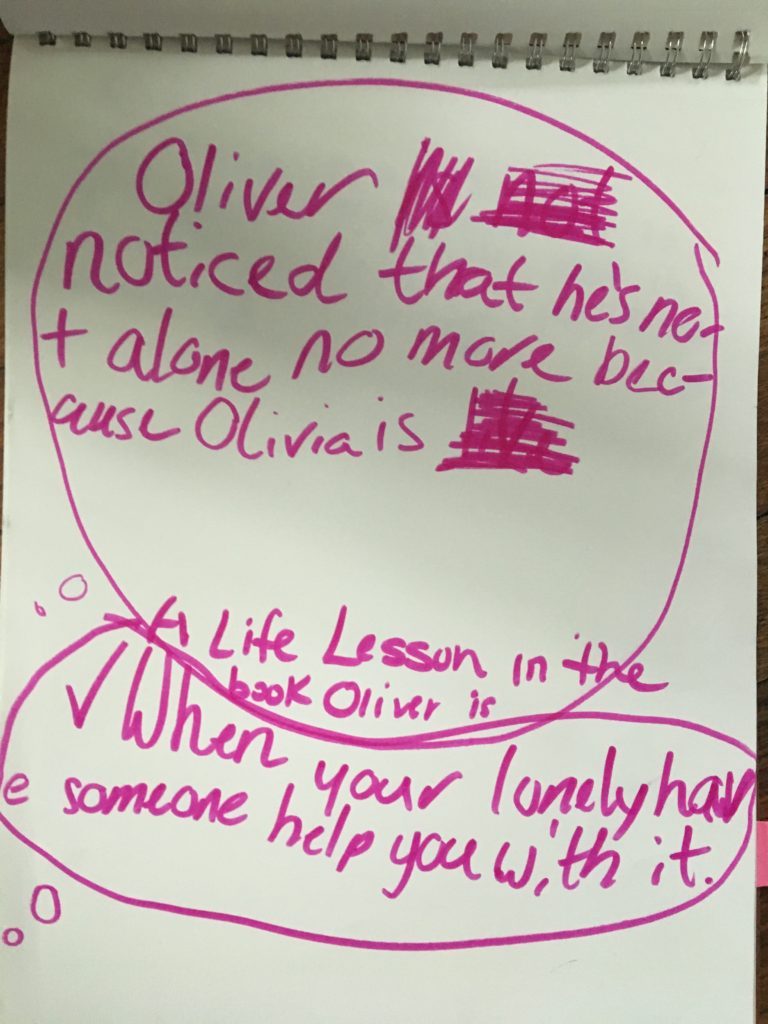
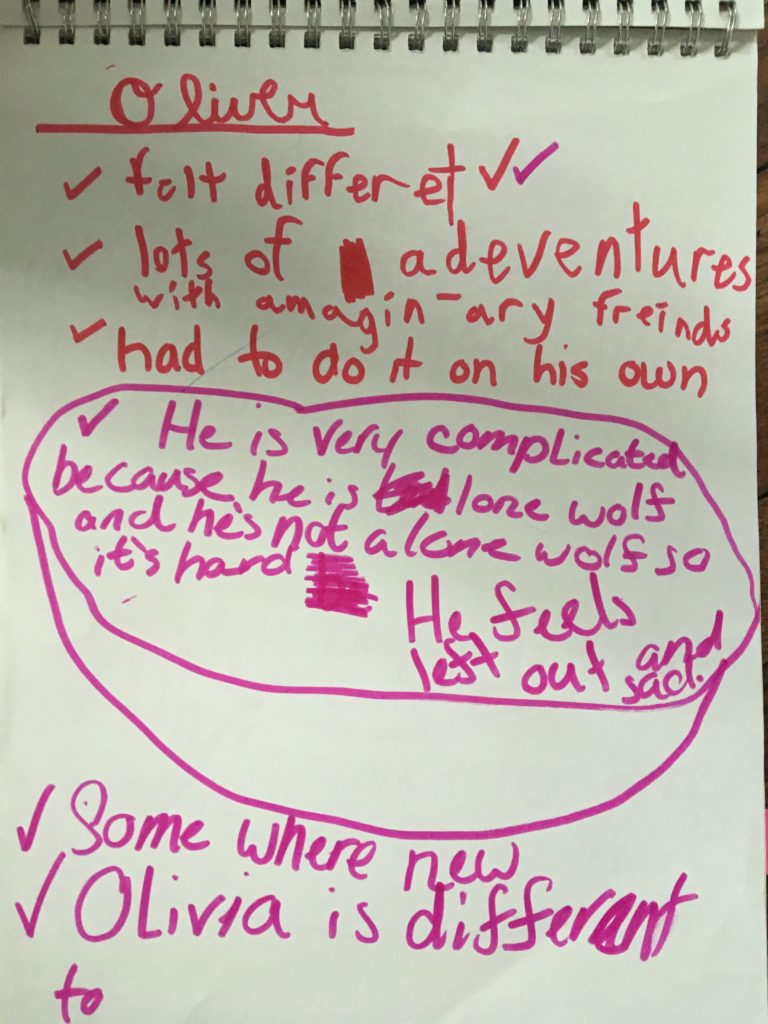
When I use the notebook, the students sit in one large circle next to their turn-and-talk partner so that everyone can see what the students write and how they organize their thinking. I position myself next to the students with the notebook so that I can give some quick teaching tips. Sometimes I direct students to write something specific, and at other times, I wait to see what they write. Either way, I make sure these students capture a few essential ideas.
Once we start reading, the students who have the whole-class notebook finish up their note, put the cap on the marker, and listen to the read aloud. They help each other jot quickly, so they don’t miss any of the read aloud. Each day, I emphasize the importance of this routine because I want them to remember that reading is essential.
The simple act of watching classmates write in the notebook each day has a significant effect on students. As time passes, students internalize all types of notetaking tips: They learn to abbreviate names, include page numbers, and bullet their ideas. They learn to put their pens down when they read, and jot only when they get to the end of a chapter or section. Most importantly, students’ dispositions about writing about reading change. Instead of complaining, students now ask, “Can we see the notes we recorded yesterday?” “When will I get to write in the notebook?” The whole notetaking process seems to make more sense because they use it every day during read aloud.
Another benefit of the whole-class notebook is that it puts a teaching tool right in students’ hands. When a student is unsure what to do in their notebook, they check out the whole-class notebook. Students look at ways to shorten sentences, structure their notes, and differentiate text evidence from their inferential thinking.
During read aloud, they also see firsthand why we take notes. They see us look back at previous entries, change our thinking, and add to an idea. They also see us refer to the notes when we have weekly whole-class grand conversations. The whole-class notebook becomes integral in the classroom because, just like the texts we read, it is a tool we treasure as a community.

